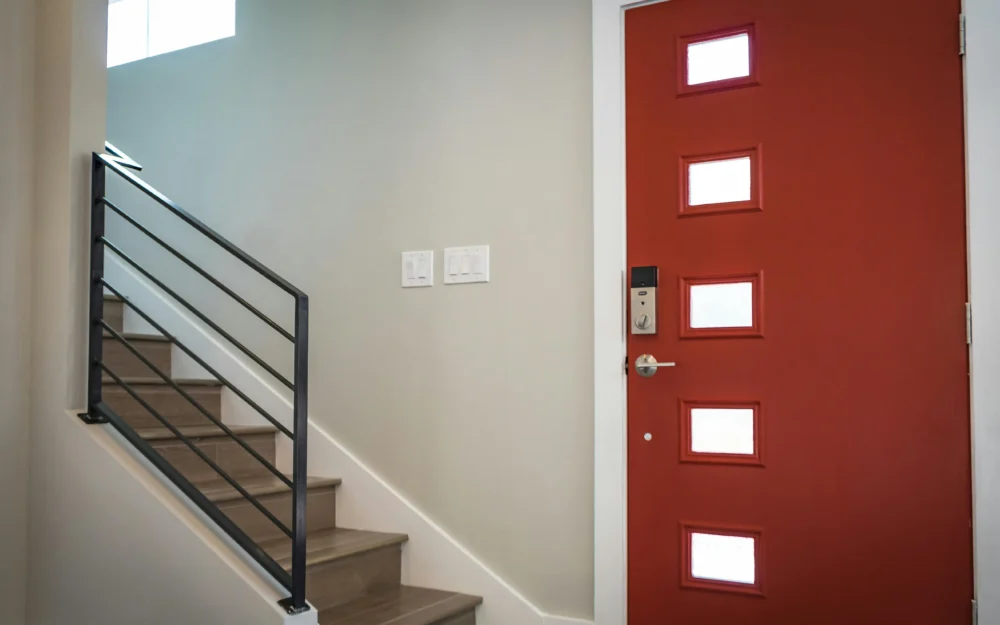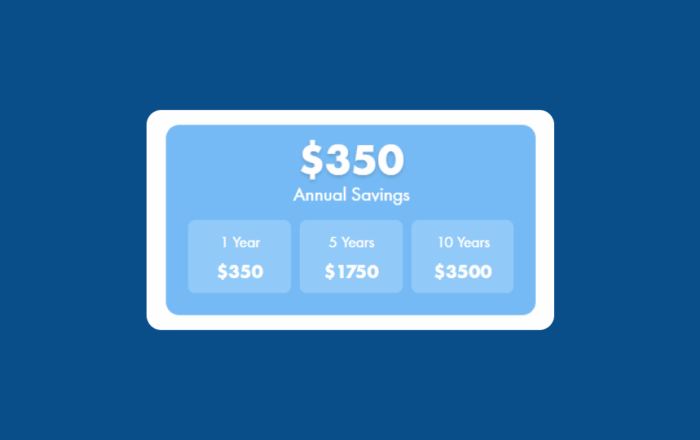Drought-Tolerant Plants for Texas Gardens
4 minute readGardening in Texas presents unique challenges. Long, hot summers and frequent droughts mean that traditional landscaping often requires significant water
Home > BKV Energy Blog > All Posts > Most Energy Efficient Doors: 2025
Choosing the right energy-efficient door can help Texas homeowners reduce cooling costs and improve home comfort year-round.
5 minute read • Last update February 2025

Energy-efficient doors are designed to keep the outside air out and the inside air in, helping maintain a comfortable temperature in your home without making your HVAC system work overtime. These doors are typically made with materials that provide good insulation, like fiberglass, steel with foam cores, or solid wood.
They also have weather stripping, tight seals, and sometimes double or triple-pane glass with low-emissivity (Low-E) coatings to prevent heat loss in the winter and keep the heat out in the summer.
In simple terms, an energy-efficient door helps lower your energy bills by reducing drafts and temperature swings. If you’ve ever felt a cold draft sneaking in around your front door in the winter or noticed it getting super hot near your patio door in the summer, an energy-efficient door can fix that.
An energy-efficient door is essential for Texas homeowners looking to reduce cooling costs in the hot summer months and retain warmth during the occasional cold snaps. It helps maintain indoor temperatures, reducing the strain on heating and cooling systems and ultimately lowering energy costs. Several factors contribute to a door’s energy efficiency:
Doors with high-quality insulation materials help reduce heat loss and prevent drafts. Foam-filled cores and dense materials provide better thermal resistance, keeping homes comfortable year-round.
For glass doors, multiple glazing layers create an insulating barrier that limits heat transfer. Double or triple-pane glass doors filled with insulating gas like argon improve energy efficiency.
Low-emissivity (Low-E) coatings reflect infrared heat while allowing natural light to pass through. This feature helps keep homes warm in winter and cool in summer by reducing heat gain and loss.
Proper seals prevent air leaks, improving efficiency. High-quality weatherstripping around door edges ensures a tight fit, reducing drafts and preventing energy loss.
Well-designed thresholds and sills block air and moisture infiltration. Adjustable or insulated thresholds enhance a door’s performance by sealing gaps at the bottom.
ENERGY STAR-certified doors meet strict energy efficiency guidelines. These doors undergo rigorous testing to ensure they provide superior insulation and energy savings.
The choice of door material plays a crucial role in determining its energy efficiency. Certain materials provide superior insulation, longevity, and overall performance, making them more effective at maintaining indoor temperatures and reducing energy costs.
Fiberglass doors have become a popular choice for Texas homeowners due to their ability to withstand extreme heat, humidity, and seasonal storms while maintaining excellent energy efficiency. Compared to natural wood, fiberglass doors offer:
Steel doors provide excellent insulation due to their foam core, making them highly energy efficient. They are also durable and require minimal maintenance.
Traditional wood doors can be energy efficient if they include an insulated core. Solid wood alone tends to have poor insulation properties, but modern insulated wood doors improve thermal performance.
Glass doors, while visually appealing, require special coatings, such as low-e coatings, and multiple panes filled with insulating gas like argon or krypton to enhance energy efficiency. Proper weatherstripping and insulated frames also play a crucial role in reducing heat transfer and improving overall insulation.
The style of a door plays a crucial role in its energy efficiency. In Texas, where high temperatures and unpredictable weather conditions impact home cooling and heating, selecting the right door style is essential. Below, we explore the most energy-efficient door styles and their benefits.
Well-insulated front doors with proper seals help prevent air leaks and improve home energy efficiency. Fiberglass and steel front doors are among the best choices for insulation.
Sliding glass doors should feature double or triple-pane glass with low-e coatings to minimize heat transfer while maximizing natural light. Look for models with strong weatherstripping and insulated frames to improve efficiency.
French doors, often made of glass panels, need multiple glazing layers and low-e coatings to enhance their insulating properties. Choosing models with reinforced frames and tight seals can further reduce energy loss.
Sliding or hinged patio doors should include multiple panes and low-e coatings to maximize efficiency. Look for ENERGY STAR-certified patio doors for optimal performance.
Texas homeowners should choose doors made from fiberglass or steel with foam-filled cores to withstand extreme heat, humidity, and seasonal storms from a typical Texas summer. These materials provide superior insulation, reducing energy loss. Additionally, doors with multiple weatherstripping layers and low-e glass panels enhance energy efficiency and maintain indoor comfort year-round.
The right door should complement your home’s aesthetic while also enhancing its energy efficiency. Whether modern, traditional, or contemporary, selecting a style that fits both function and appearance is essential.
Energy-efficient doors come at varying price points. While premium options may offer better insulation and durability, there are cost-effective solutions that still provide significant energy savings.
Checking customer reviews and energy efficiency ratings can help determine the best door for your home. Look for ENERGY STAR certifications and high R-value ratings.
A strong warranty can indicate the quality and longevity of an energy-efficient door. Look for warranties that cover insulation performance and durability.
ENERGY STAR-certified doors with fiberglass or steel construction tend to be the most energy-efficient due to their insulation properties and durability.
Energy-efficient doors typically have multiple glazing layers, weatherstripping, insulated cores, and an ENERGY STAR certification.
Bi-folding doors can be energy-efficient if they have double or triple-pane glass, low-e coatings, and insulated frames. However, they may not perform as well as traditional entry doors in extreme weather.
The highest R-value for an exterior door can reach up to R-10, typically found in high-performance fiberglass or insulated steel doors.
Yes, homeowners may qualify for federal tax credits for installing ENERGY STAR-certified doors. To determine eligibility and access the most up-to-date information, visit the ENERGY STAR website or review the IRS guidelines.
For Texas homeowners, choosing an energy-efficient door is a crucial step in reducing high cooling costs during the long summers and improving overall home comfort. The right combination of materials, insulation, and sealing ensures better performance. Whether upgrading an entry door or patio doors, prioritizing energy efficiency benefits both your home and your wallet.
Understanding energy-efficient doors is just one part of optimizing your home. Having an affordable electricity plan with clear, straightforward terms is another important step for Texas residents.
At BKVE, we offer Texans something different from typical electricity providers. Our plans are designed to be simple and affordable, without the confusing terms and hidden fees often found in the energy market. We believe in complete transparency. Our gimmick-free, fixed-rate plans come with straightforward contracts that clearly explain your rates and terms.
Graham Lumley, Digital Marketing Manager at BKV Energy, leads digital and traditional marketing strategies, focusing on educating Texans about the state's deregulated energy market. With over 8 years of marketing experience, he creates content to help consumers understand and save on their energy bills, bringing a fresh and dynamic approach to the industry.

Gardening in Texas presents unique challenges. Long, hot summers and frequent droughts mean that traditional landscaping often requires significant water

How much can you save with a more energy efficient air conditioner?
Get $50 off your electric bill!
Use code BKVEJOINUS50
Enter your zip code to shop BKV Energy's affordable, fixed-rate Texas electricity plans. Use the promo code for $50 off your electric bill.